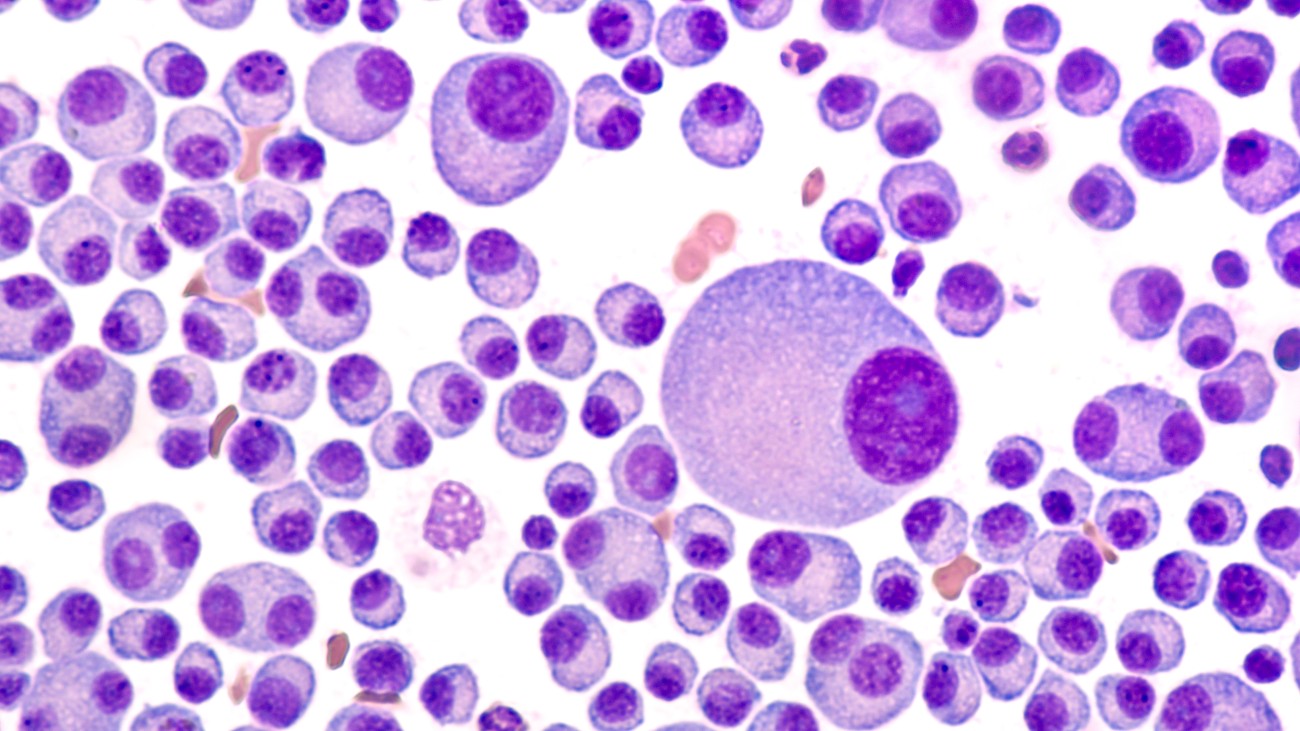Multiple myeloma is one of the more uncommon cancers people can develop. According to the American Cancer Society, the lifetime risk of developing this type of blood cancer is one in 132.¹ Although the odds of getting diagnosed with multiple myeloma are lower compared to other diseases, that doesn’t make it any less important to recognize the signs and symptoms. The sooner you recognize the signs, the sooner you can receive a diagnosis and increase your chances of successful treatment.
Some signs of multiple myeloma are uncommon and something not everyone may consider an immediate concern. Search online to find out what symptoms are linked to this type of cancer.
 David A Litman / Shutterstock
David A Litman / ShutterstockLess Known Signs of Multiple Myeloma
Multiple myeloma comes with a long list of symptoms that may or may not be noticeable to the patient. In some cases, Cancer Treatment Centers of America says that patients may develop other conditions as multiple myeloma continues to progress.²
One of those conditions is amyloidosis, which is the buildup of proteins in the body that injures organs and stops them from working properly. Symptoms related to both multiple myeloma and amyloidosis include:
- Purple spots on the skin;
- Swollen tongue or other swelling issues;
- Numb or tingly feeling in feet and legs;
- Painful joints, or;
- Diarrhea or other digestive issues.
It’s also possible for some patients to experience hypercalcemia, which is when there are elevated levels of calcium in the blood. It’s the result of overactive parathyroid glands that can be caused by cancer. Mayo Clinic says some symptoms directly related to this condition are:³
- Excessive thirst,
- Confusion or lethargy,
- Bone pain and muscle weakness, or;
- Upset stomach, nausea, and constipation.
Additionally, the National Organization for Rare Disorders says that some individuals may experience repeated nosebleeds or abnormal bleeding episodes due to a condition called thrombocytopenia.⁴ This may occur due to the body’s overproduction of plasma cells, which can hinder or decrease the effectiveness of other bodily cells.
Common Symptoms
While those symptoms are less common, there are symptoms on the opposite end of the spectrum that people with multiple myeloma experience. Keep in mind that each person with this type of cancer will have different experiences and no two cases are exactly alike.
The most common symptom is bone pain, which can occur in the lower back or ribs. Most patients will endure worsening pain when moving, ranging from mild to severe. Patients can also experience kidney damage and injury.⁵
According to WebMD, some more noticeable symptoms a person may have include:⁶
- Pain, weakness, and numbness or tingling;
- Tiredness;
- Brittle bones that hurt and break more easily;
- Fever and infections;
- More frequent nosebleeds, bruising, and bleeding gums, or;
- Weight loss and nausea.
While many patients may experience some type of physical sensation related to multiple myeloma, others may be asymptomatic. It’s possible for someone not to experience any symptoms until the cancer develops into later stages.
It’s important to keep in mind that these could also be linked to other health problems unrelated to multiple myeloma. The only way to know for sure is to schedule an appointment with your doctor and receive a proper diagnosis.
What is Multiple Myeloma?
Multiple myeloma is the most common type of plasma cell cancer. According to the Canadian Cancer Society, it starts in plasma cells that work to make antibodies and help fight infection.⁷ When there is a buildup of abnormal plasma cells in the bone marrow, multiple myeloma develops and makes it difficult for other blood cells to develop and function well.
Doctors who suspect their patient may have multiple myeloma have several options for testing. Mayo Clinic says the follow procedures may be ordered:⁸
- Blood tests;
- Urine tests;
- Bone marrow examination, and;
- Imaging tests such as X-ray, MRI, CT or PET scan.
Once a patient is diagnosed with multiple myeloma, their condition is classified into a stage based on how much cancer is in the body. Risk categories can also be assigned to help doctors decide on a patient’s treatment options.
There are different methods for treatment. Some patients may go through several treatments depending on their conditions. Treatments for multiple myeloma include:
- Targeted therapy
- Immunotherapy;
- Chemotherapy;
- Corticosteroids;
- Bone marrow transplant, and;
- Radiation therapy.
According to Mayo Clinic, some patients may not require immediate treatment if they are diagnosed with smoldering multiple myeloma. This is when a patient is not experiencing any symptoms. Patients with slow growing or early stage multiple myeloma may also have their condition monitored until their doctor thinks it’s time to undergo treatment.
Learn More About Multiple Myeloma Online
Knowing the signs and symptoms of multiple myeloma can help indicate whether you need medical attention. Like all cancers, it’s better to get a diagnosis early on before the disease develops into more severe stages. If you’re dealing with persistent symptoms related to multiple myeloma, schedule a visit with your doctor. You can undergo proper testing and receive a diagnosis to treat your condition.


